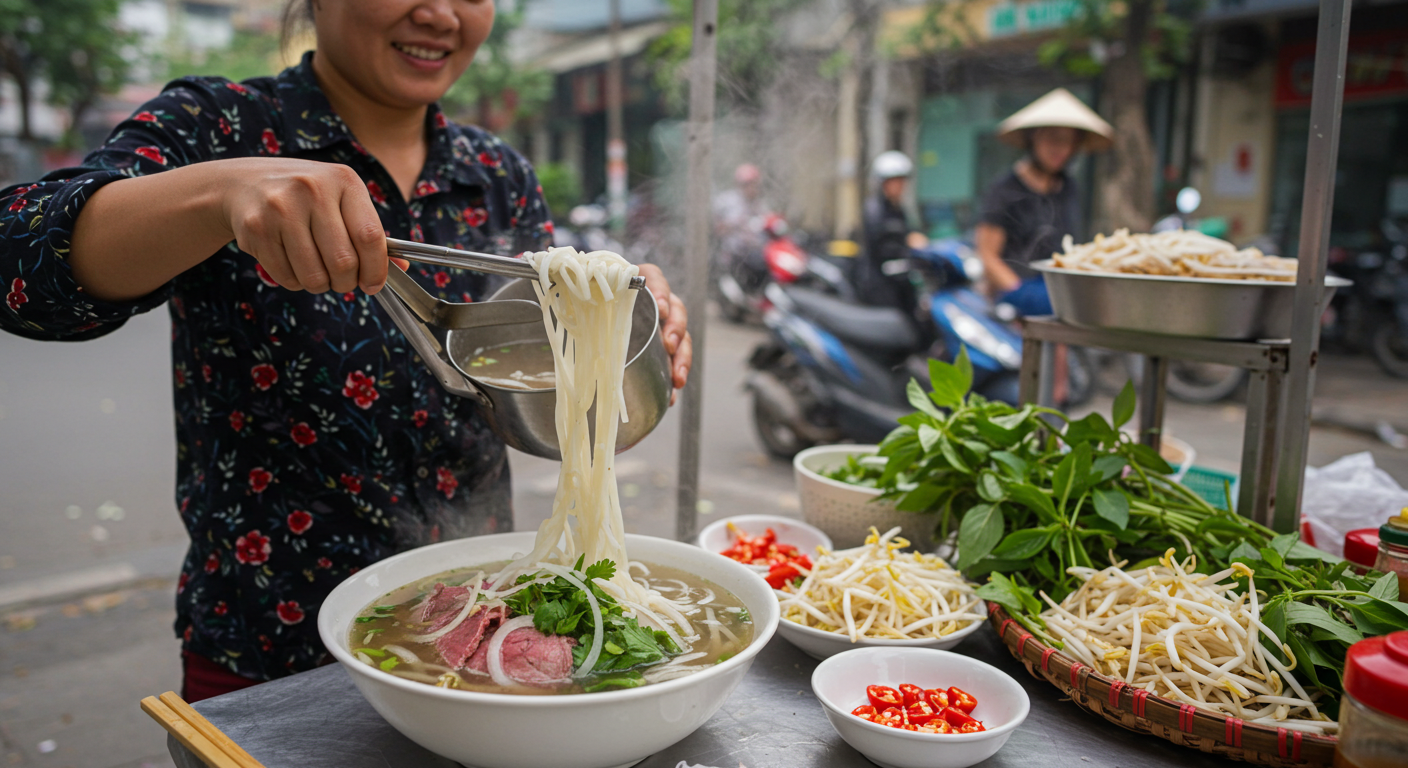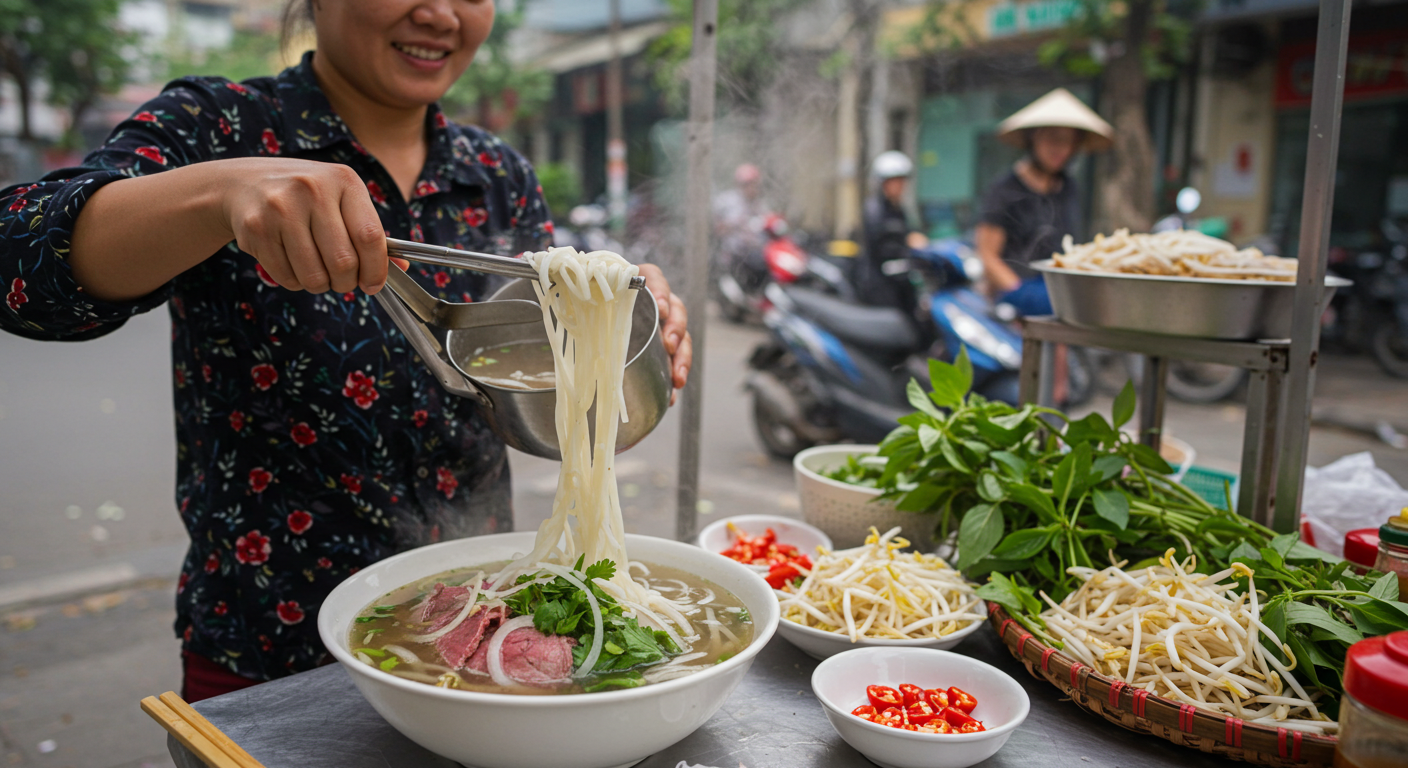
Best Phở Toppings
Table of Contents
Best Phở Toppings: The Perfect Additions to Your Bowl
A great bowl of phở starts with flavorful broth and fresh noodles, but it's the toppings that truly make each bowl your own. In Vietnam, these additions aren't just optional extras – they're an essential part of the experience. Let's explore the world of phở toppings and how to use them like a pro!
Fresh Herbs: The Soul of Phở
Thai Basil (Húng Quế)
- Distinct purple stems and licorice-like flavor
- Add a few leaves at a time as you eat
- Tear larger leaves to release more aroma
- Essential in southern-style phở
Cilantro (Rau Mùi)
- Already sprinkled on top when served
- Bright, citrusy flavor
- Enhances the freshness of the broth
- Used in both northern and southern styles
Culantro (Ngò Gai)
- Long, serrated leaves with stronger flavor than cilantro
- Often mistaken for cilantro but has a unique taste
- Cut or tear into smaller pieces
- Popular in southern Vietnam
Vietnamese Mint (Rau Răm)
- Peppery flavor with hints of citrus
- Less common but adds complexity
- More frequently used in central Vietnam
- Pairs especially well with chicken phở

Vegetable Garnishes: Texture and Freshness
Bean Sprouts (Giá)
- Adds crunch and light flavor
- Can be added raw or blanched
- More common in southern phở
- Contains vitamin C and folate
Lime or Lemon Wedges (Chanh)
- Squeeze for brightness and acidity
- Helps cut through the richness of the broth
- Start with just a small squeeze – you can always add more
- In northern Vietnam, you might get a kumquat instead
Sliced Chilis (Ớt)
- Usually bird's eye chilies (extremely spicy!)
- Can be added directly or made into a chili sauce
- For less heat, remove the seeds first
- Handle with care – a little goes a long way
Sliced Onions (Hành Tây)
- Often pre-added to the broth
- Some shops serve extra on the side
- White or yellow onions, thinly sliced
- Quick-pickled versions might be available

Sauces and Condiments: Flavor Boosters
Hoisin Sauce (Tương Đen)
- Sweet, thick sauce with hints of five spice
- In southern Vietnam, it's a standard table condiment
- Some purists consider it taboo for authentic northern phở
- Can be used as a dipping sauce for meat or added to broth
Sriracha (Tương Ớt)
- Spicy red chili sauce with garlic notes
- More common in Vietnamese-American phở shops
- In Vietnam, fresh chilies are often used instead
- Mix with hoisin for a balanced sweet-spicy dip
Fish Sauce (Nước Mắm)
- Adds savory depth (umami)
- Use sparingly – it's very potent
- Sometimes pre-mixed with lime and sugar
- More commonly used in central and southern regions
Additional Protein Options
Rare Beef (Tái)
- Thinly sliced raw beef that cooks in the hot broth
- Usually served on top of the noodles
- The most traditional meat option
- For extra tenderness, ask for filet (bò phi lê)
Beef Balls (Bò Viên)
- Chewy, bouncy meatballs with distinctive texture
- Made from beef and tendon
- Sliced in half or served whole
- Popular with children and as an extra topping
Tendon (Gân)
- Gelatinous texture, rich in collagen
- Slow-cooked until tender
- An acquired taste for some Westerners
- Prized in Vietnam for its unique mouthfeel
How to Add Toppings Like a Local
- First taste the broth on its own to appreciate the base flavor
- Add herbs gradually throughout your meal for sustained freshness
- Mix and match sauces in a small dish for dipping meat, not directly in the broth (especially in northern Vietnam)
- Add bean sprouts in small amounts so they maintain their crunch
- Save some lime for the end if the broth becomes too rich
Regional Topping Etiquette
Northern Style (Hanoi):
- Minimal toppings – focus on the broth
- Usually just green onions and a touch of black pepper
- Hoisin and sriracha are often considered unnecessary
- Beef quality is the star, not the toppings
Southern Style (Ho Chi Minh City):
- Abundant herbs and garnishes
- Customization is encouraged
- Separate sauce dishes for dipping
- Bean sprouts are essential
Creating Your Perfect Bowl
The beauty of phở is that there's no single "right way" to enjoy it. While regional traditions exist, the best bowl is the one that tastes perfect to you. Here are some approaches to try:
- Purist Approach: Just broth, noodles, meat, and a touch of lime
- Herb Lover's Bowl: Load up with all available fresh herbs
- Spice Enthusiast: Add extra chilies and sriracha
- Texture Explorer: Mix in bean sprouts, tendon, and tripe for contrasting textures
Remember that phở is a personal experience. Experiment with different combinations of toppings until you find your ideal balance!
Pro Tips
- Don't add all your toppings at once – the herbs will wilt and lose flavor
- Fresh herbs should be torn, not cut, to release their aromas
- In authentic phở shops, the herbs are often served on a separate plate
- For takeout phở, keep toppings separate until ready to eat
- Vietnamese basil is more heat-resistant than Thai basil – add it earlier
Whether you're enjoying phở in Vietnam or at your local Vietnamese restaurant, these toppings and garnishes transform a simple soup into a complex, personalized culinary experience. Happy slurping!
